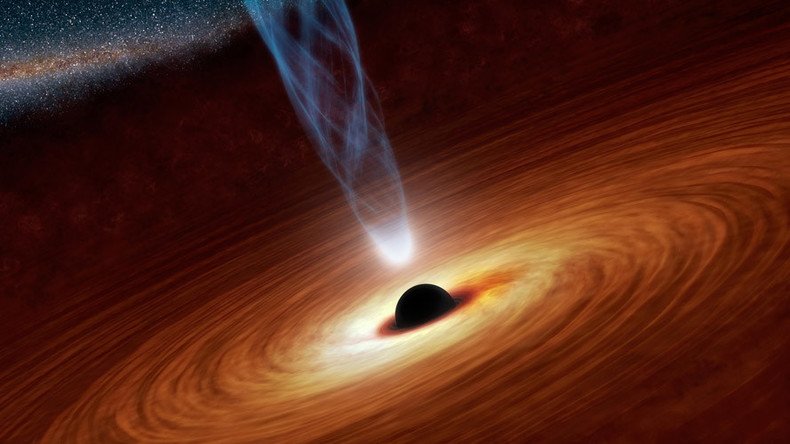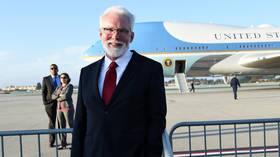Wave reviews: Proof of gravity’s vibrations leaves internet floating on air

A century after physicist Albert Einstein first mooted the idea of gravitational waves, US scientists have confirmed their existence.
Einstein proposed in 1916, through his Theory of General Relativity, that what we know as ‘gravitational pull’ is created by the distortion in space-time by mass or energy.
Before today’s announcement, physical proof of the vibrations had been sought for decades by scientists who harbored hope of tracing waves which originated in the Big Bang - the creation of the universe.
LISTEN: This is the sound of two black holes colliding https://t.co/lrxMialyGL#LIGO#gravitywaveshttps://t.co/tIaLL16Ggu
— RT (@RT_com) February 11, 2016
The LIGO Scientific Collaboration had been leading the research, operating detectors - known as interferometers - in the United States. The detectors work by splitting a laser beam between two perpendicular corridors 4km in length, bouncing them off mirrors at each end.
Without the presence of a gravitational wave, the beams should return to their source at exactly the same time.
But the presence of gravity waves would influence the beams differently: with stretching or squeezing of space-time from a gravity wave, the distance to the mirror is longer in one corridor and shorter in the other, meaning the light will not be in sync.
The groundbreaking discovery was actually recorded on the September 14 last year.
.@LIGO scientists at #Caltech viewing get a well-deserved round of applause #gravitationalwaves#einsteinwasrightpic.twitter.com/Vv6IsrroSV
— Caltech (@Caltech) February 11, 2016
Now with the waves detected from two black holes colliding, a new dawn in science can begin.
Whooop! Der Beweis ist da: Es gibt #Gravitationswellen! #Einstein hatte recht. Wow #LIGO: https://t.co/XzkhsIc0g6pic.twitter.com/ejrP8QQ8GU
— Sven Stockrahm (@svensonst) February 11, 2016
On the horizon are potential studies looking into the phenomena of black holes, the creation of the cosmos, and whether other universes exist outside our own.
READ MORE: Take that, Einstein! ‘Ok Go’ film mesmerizing zero gravity music video in Russia
While not everyone can claim to have a complete understanding of the fabric of spacetime, those on social media are naturally ecstatic.
Representación de la NASA de cómo se producen ondas gravitacionales cuando colapsan dos estrellas de neutrones. pic.twitter.com/6qZ7i4iF1z
— Miguel G. Corral (@miguelgcorral) February 11, 2016
The news of the gravitational waves has not just been making ripples in the universe, but on Twitter too:
Astrophysicist Grant Tremblay posted graphs of “one of the greatest achievements in scientific history.”
Planetary expert Carolyn Porco, involved in the Cassini project to document Saturn, congratulated one of the cofounders of the LIGO Project - Kip Thorne, the theoretical physicist who influenced the ‘Interstellar’ film.
I remember talking to Kip Thorne in 1980s abt his ideas for #LIGO. How fabulous that this day has arrived. Very proud of my alma mater.
— Carolyn Porco (@carolynporco) February 11, 2016
Many, many congratulations to the #LIGO team. Indeed, a cosmological moon shot!
— Carolyn Porco (@carolynporco) February 11, 2016
Emily Lakdawalla, senior editor at the Planetary Society, which promotes space exploration, said that although geology rocks, it was difficult not get excited about the physics find.
I won't be writing anything about #LIGO because I'm a geologist, not a physicist, captain! But it's hard not to be carried away today :)
— Emily Lakdawalla (@elakdawalla) February 11, 2016
Of course, there is always at least one smart ass...
Gravity waves, I wave back, but it was waving to to the person behind me.
— Unnamed Insider (@Unnamedinsider) February 11, 2016













